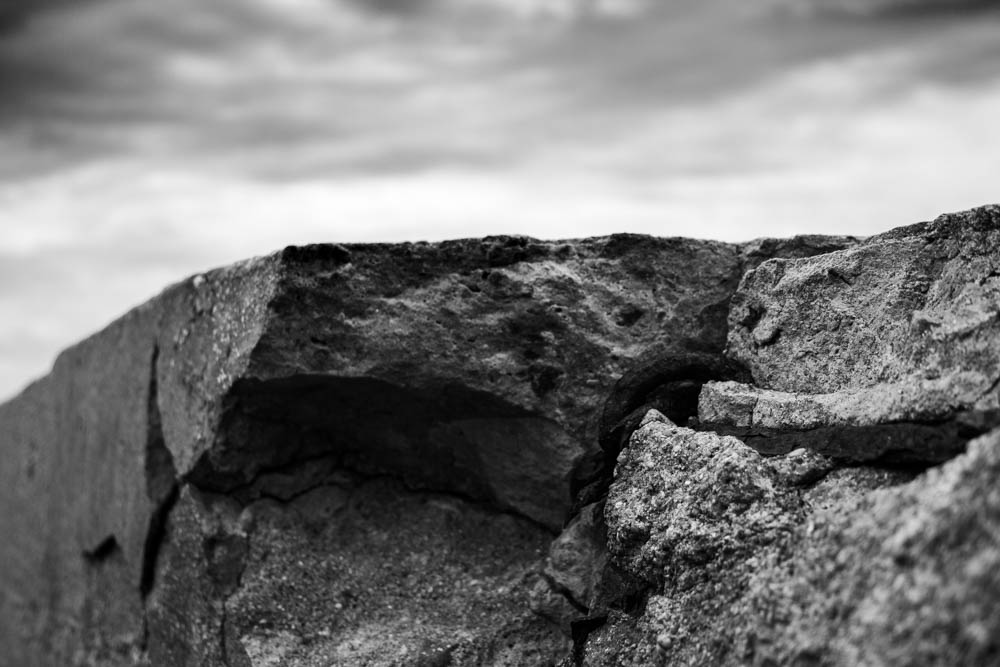
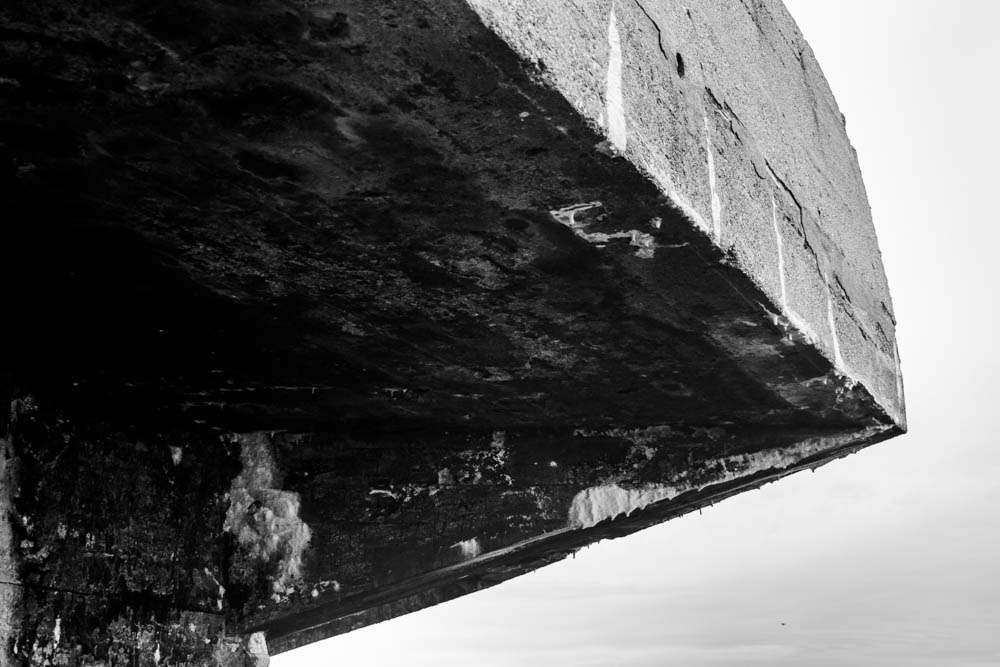
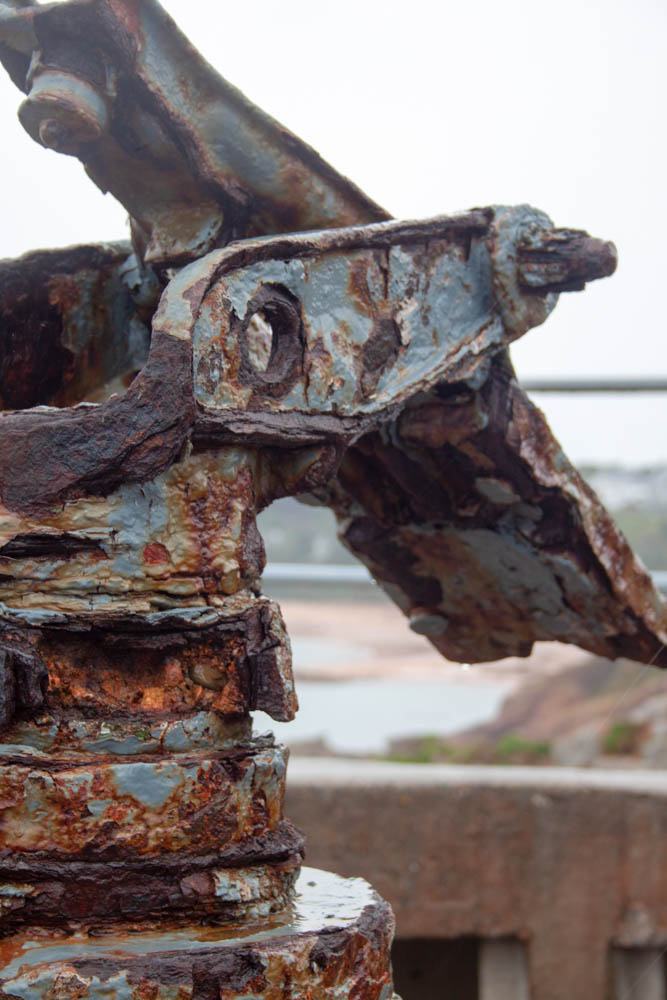

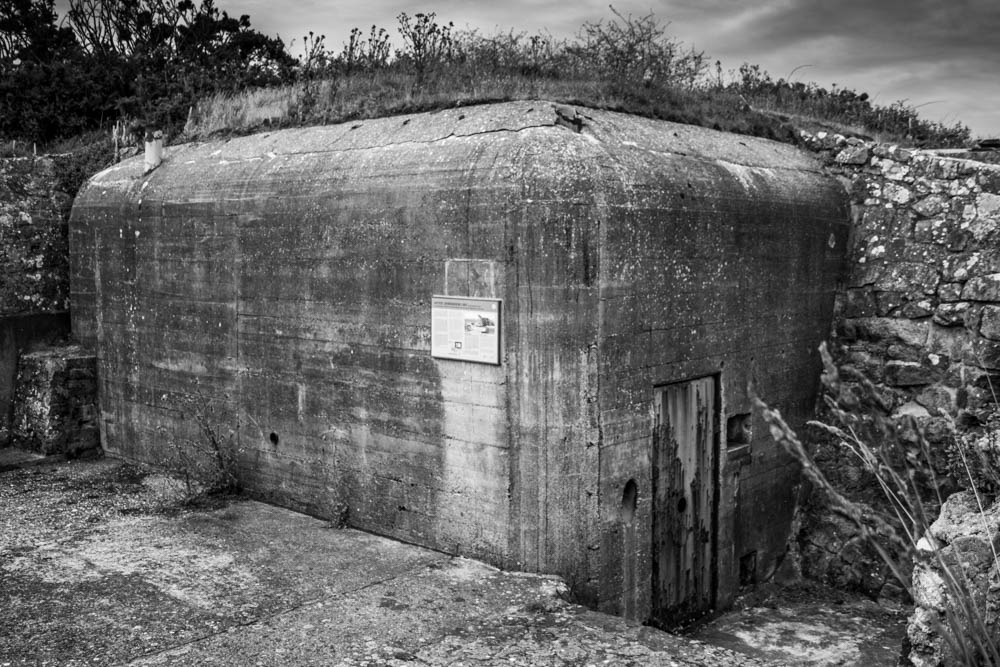





3 Words:
Aftermath Of War.
Sentence:
The impact of the 2nd World War and the occupation the island of Jersey.
Paragraph:
How was jersey impacted by the occupation in 1940 as well as the lasting effects of the Germans occupying the island. I Want my ‘zine to show the aftermath of the events that took place between 1940-45 using both contrasting images and as well as similar images to show the different effects of the occupation.

I wanted to start off by showing a more human and personal side to the occupation, hence why I started off with both the old rusted helmets and sculpture of a soldier, as it shows the decay from what once was a pristine shiny helmet, into a rusted lump of metal. I also like that the image has a photo of a family underneath the sculpture, which only adds to creation of the soldier character that my zine follows.
Next I wanted to show some of the sights that a soldier would see, such as the stairs in a bunker as well as using a photo with multiple layers, having a prominent background and a shallow focus in order to create a realistic view of what a person would actually see.
My next 2 pages use light to connect them together(Note: images 5 & 6 have to be swapped around to create desired effect) as well as being fairly close up and focusing on smaller subjects in comparison to the previous images. I found that both of these images have light coming from fairly similar angles, which can be linked together by putting image 6 on the left page, and image 5 on the right, making it seem as if they are being lit from the same source.
The next 2 images carry on the theme of the smaller items that a German soldier would pass by when navigating the bunkers. I also decided to put these images together as they both feature symbols of the German occupation, with one quite clearly a symbol of the Nazis, and the other a German word for scriptorium; which is a room set apart for writing and where manuscripts were copied. I like this contrast from something so extreme to something so simple and calm.
My next 2 images are linked through colour, showing the open greenery of the island, which is then contrasted by the harsh concrete of the bunkers, but still keeping a part of jerseys beauty in the form of a single plant sprouting from the base.
This is followed by 2 images that focus on the idea of tunnel vision with one using multiple exposures to show how disorientating it must be to be under attack, or even just the though of a possible attack happening. I intended for the other image to seem like a machine gun placement aiming at the lookout tower, to add to the theme of paranoia and disorientation.
After these pictures, I wanted to show the exterior and then interior to the lookout post and i specifically took the picture of the tower through another bunker in order to highlight the floor that the writing was found on. The images are also linked as they both feature themes of building and destruction, with one being a repair of the interior, and the other having significant damage around the bunker.
My final set of images show what could have happened to the soldier that we have been following the whole time, and how he could have been wounded and sent to a first aid post, put on a list of patients, or even a list of those who died. For the front and rear covers i will be using the last image to wrap around the front and back of the zine, with the tower on the front cover and most likely a title next to it on the left, and then have the back of the zine be taken up by the ocean of in the photo.
The definition of a zine/zeen is short for a magazine and is self-published work in a small-circulation which is usually published vie photocopier. Zines can be a product of a single person or a small group which are photocopied into physical prints. The concept of zines came from the amateur press movement of the late 19th century, which crossed over with subculture of science fiction in the 1930s. This was known as a popular graphic-style which associated with zines which was an artistic influence.
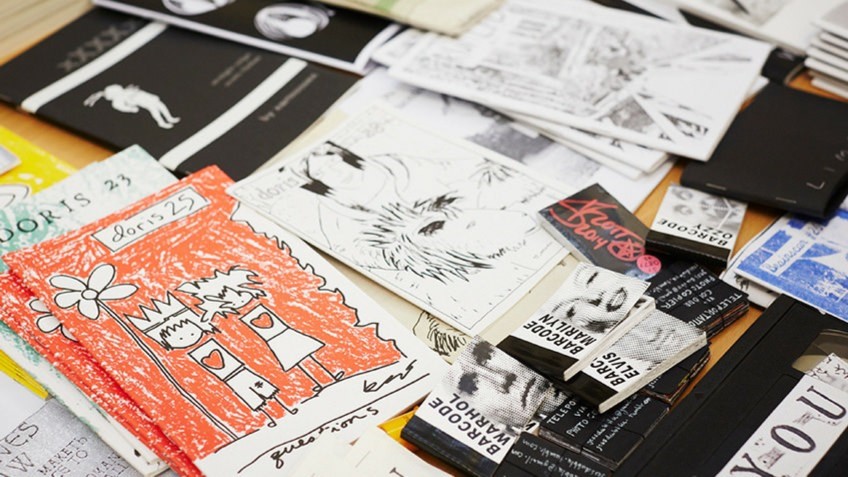
From looking into Phillips’s work, i discovered that she was a very colorful artist who used photo manipulation in order to add a different concept to an image. She is known for her war images which have been edited to include brighter prints to bring more colour into an image as the old world war images were black and white which is adding character. This method is used very effectively as its helping hinder people to look at older images from the war, due to the new twist on the images to make them modern. Therefore, her method is helping to educate.
This photographer/ photo manipulator is not on the internet, however i can get a feel to the type of editor she was by looking into her images from a book.
There was a certain topic of hers which intrigued me which was simply called ‘Paper’. During this project she mainly worked with older images from the world war stage. This project included editing flower prints onto images from cut out windows, people etc. The use of the world war images was helping to educate people as they wanted to look at these now modernly modified images.


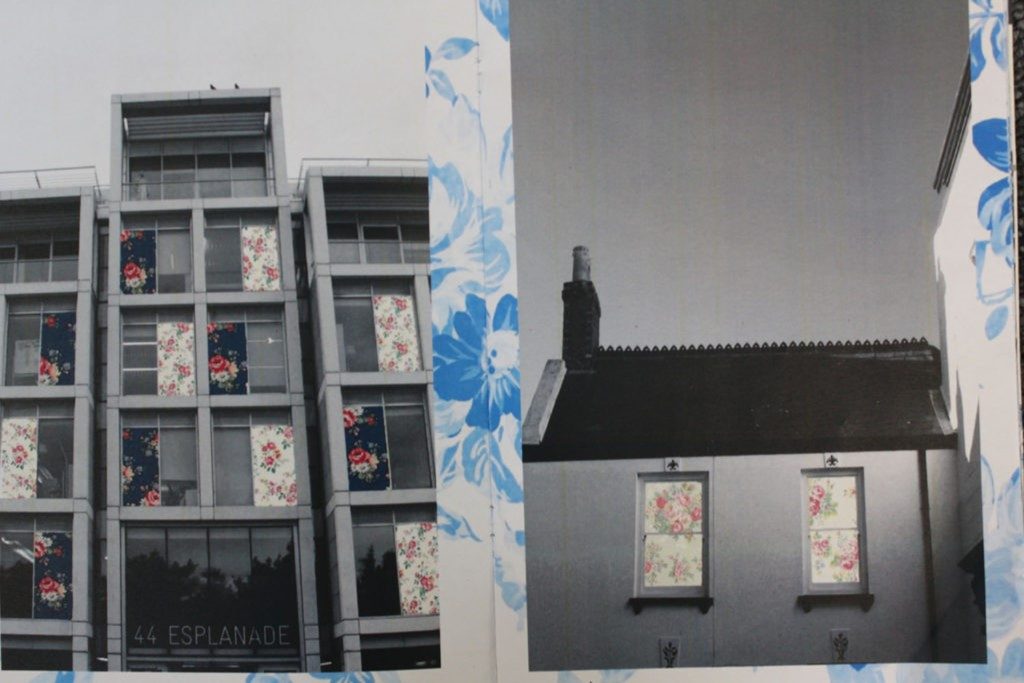
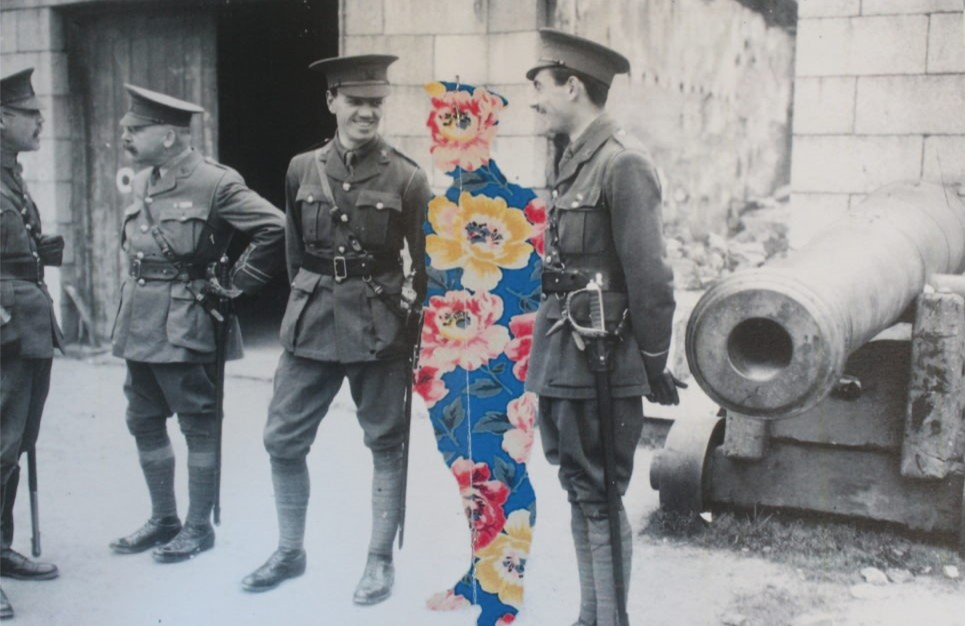
This image was displayed in a zine which was an A4 size and the particular image was landscape just like the whole book. The orientation of this image was originally from WWII , meaning Phillips did not take the original image. However, as seen she has edited a flower print after cutting out a soldier in the image. This is suggesting that even tho these soldiers are in a horrible situation as they are having to kill people to defend their country, they still have a colorful heart and are pure. The flowers are representing growth and the colors are representing happiness and childishness. Although we don’t know why they could be happy, the growth aspect is representing that although they are fighting for their lives they are living and growing, as well as growing from this horrid situation they are in. The colors could represent childishness as some people faked their age in order to get into the war.
Technical analysis- This image would have been taken in natural lighting as it has been taken outside which we can tell from the background. This also would have been originally taken with an old camera due to the black and white effect, meaning that there wouldn’t have been many camera setting to experiment with. However, it looks as if a fast shutter speed have been used due to the fully focused image.
Visual analysis- This is a landscape image which as we can see if a black and white original image with a flower print edit as a solider. This edit is directly in the center of the image making it stand out even more.
The first thing i wanted to do before i created my zine was to research an artist that caught my eye with their work, so i wondered about my photography class looking at the zine previews that are found there and the artist Sky Ayling Phillip caught my eye with one of her work which was a zine called “Paper”
Now unfortunately i tried to find Sky on the internet in order to research them but i didn’t find them
What i liked about Sky’s work is how they used a flower wall paper-like background in each of her photographs and cropped out some objects like window, doors, etc. in order to show the wall paper in the background only behind some parts in the zine
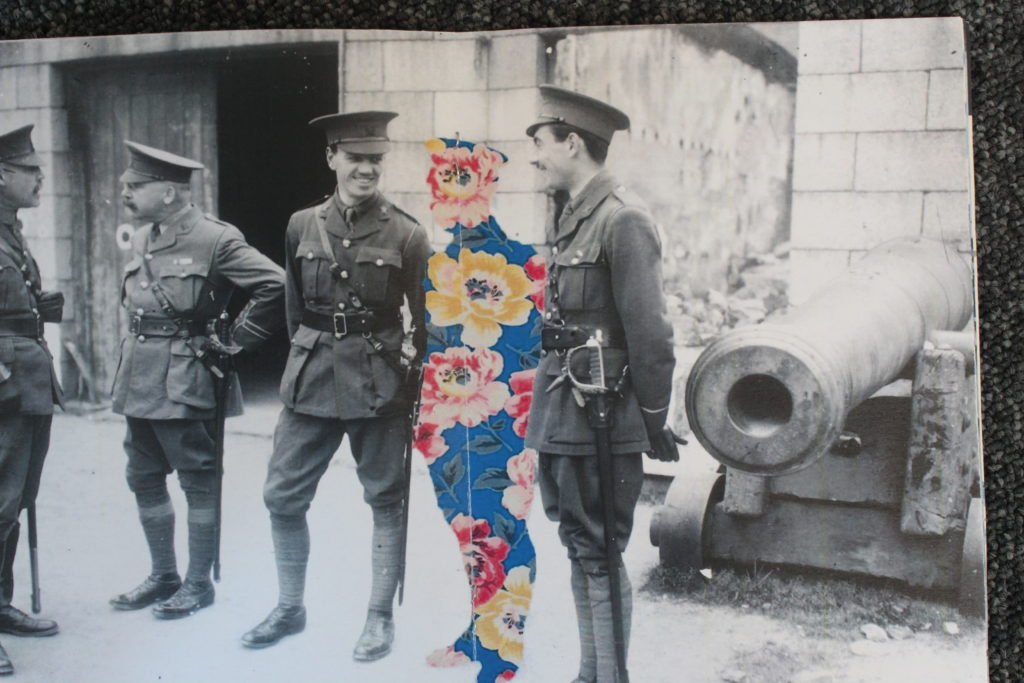
This is one of her work found in her zine called Paper, this piece of art as you can see contains a missing person that Sky cut out of the image to make the background wall paper visible, which adds a lot of color and meaning to the photograph and the mixture of the black and white background in addition to the colored flower wallpaper really exposes and makes the wall paper piece stand out and catch is the eye of the viewer.
i took some photographs of her zine “Paper” using a camera with manual focus and chose the best two photographs

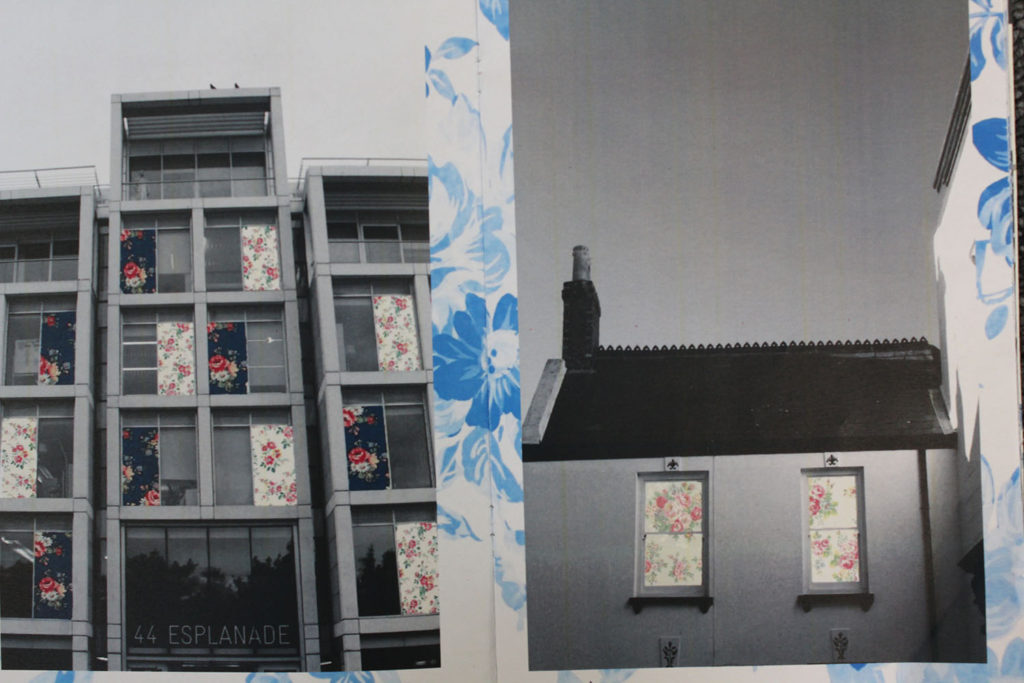
In conclusion, Sky’s work inspired me with a lot of ideas for my zine and i just wanted to give her credit by writing this blog post about her work.
The history of my family is massively based around the occupation, there were six people from my direct family that were alive during the occupation, this was my grandmother and great grandmother and her husband, and my grand father and great grandfather and his wife. There is a plethora of stories about things about my grandfather during the occupation a she lived very actively and hated the Germans ans wasn’t afraid to act upon that hatred.
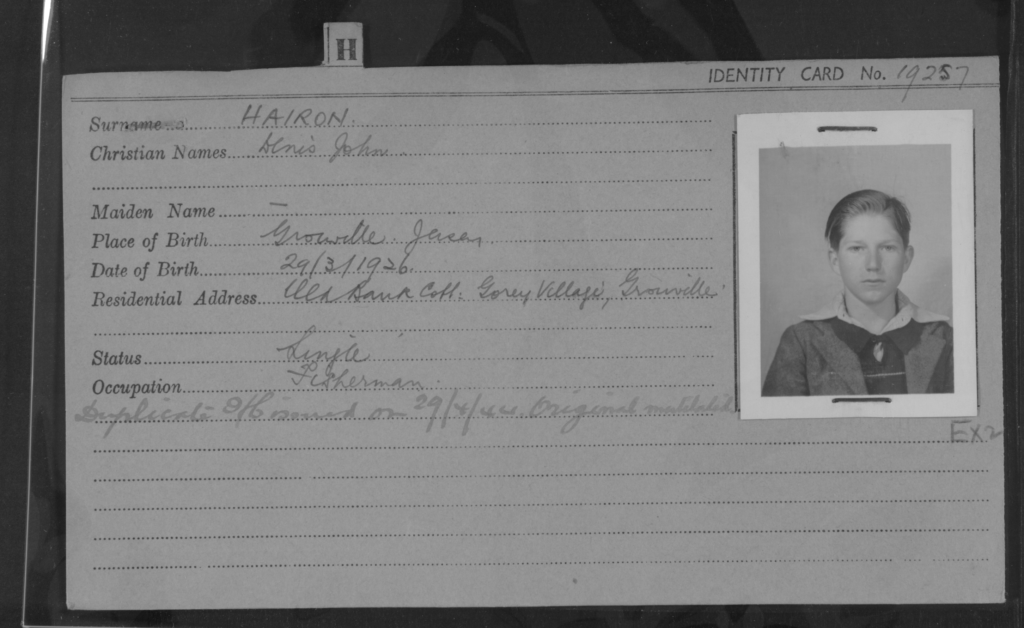
The first was when he was about 15 him and his friends got wind of a Pig that a group of high ranking Jersey officials and a few of the high up Nazis within the island were fattening up to have a feast, once they had confirmed this they all (about 8 of them) all marched up to Queens valley woods where the pig was being kept. Going up there a few of them including my grandfather had their rifles with them, this is significant as if the Germans had seen them with their guns they would have been shot on sight, but they took them with them anyways as they thought the Germans might have tried to kill them to get the cow as they were just as hungry. Once they had the pig they took it back to Gory and it butchered then shared out the meat between as many people as they could.
Another story from my Grandfathers time in the occupation was that he was a fisherman the whole time with his dad, he used to row the boat out into Gory bay. He had been doing it for years before the occupation but because of the rationing and the hard conditions within the final year of the occupation he had to stop as he didn’t have the energy to do it any more.
The final main story is the one about the relationship between my grandparents as they had both known each other for years before as her mother was the fishmonger that my granddad and his dad brought their catch to. During the occupation they started seeing each other and their relationship became official on liberation day at the end Albert pier when they could see the american warship coming in to liberate them.
The Channel islands were the most heavily fortified part of the ‘Atlantic wall’ (a line of massive defence works that ran from the baltics to spain). The channel islands were the only part of the British isles that German troops would set foot on, Hitler poured resources into defending the islands from British forces trying to re-capture them; the amount of resources and funds that he put in the islands far outweighed the genuine strategic value of them.
Batterie Lothringen was made so that it could cover the whole island at close range, it was made to mainly protect the south of the island it has an effective range of 14,000m and had 47 permanent implacements from artillery to flamethrowers.
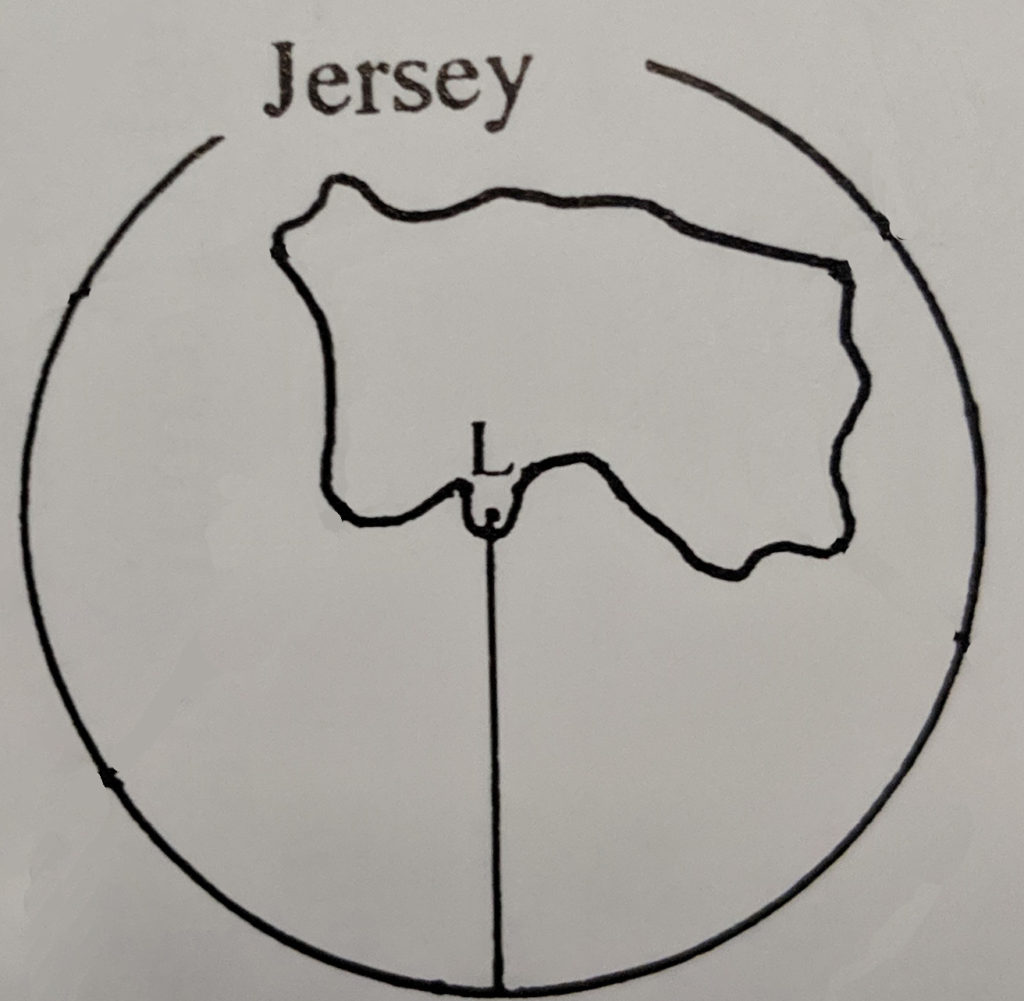

A zine (pronounced zeen) is an independently or self-published booklet, often created by physically cutting and gluing text and images together onto a master flat for photocopying, but it is also common to produce the master by typing and formatting pages on a computer. The publication is usually folded and stapled. The first ‘zine’ was made in 1775 when Thomas Paine self-published Common Sense and used it as an instrument in promoting the ideas that contributed to the U.S. War for Independence. Others credit the Science Correspondence Club in Chicago for producing the first zines in the 1930s called The Comet. These were based on the sci-fi genre and called fanzines. With time, the publications came to be known simply as zines. Just a perfect example to demonstrate the free spirit of zine culture.
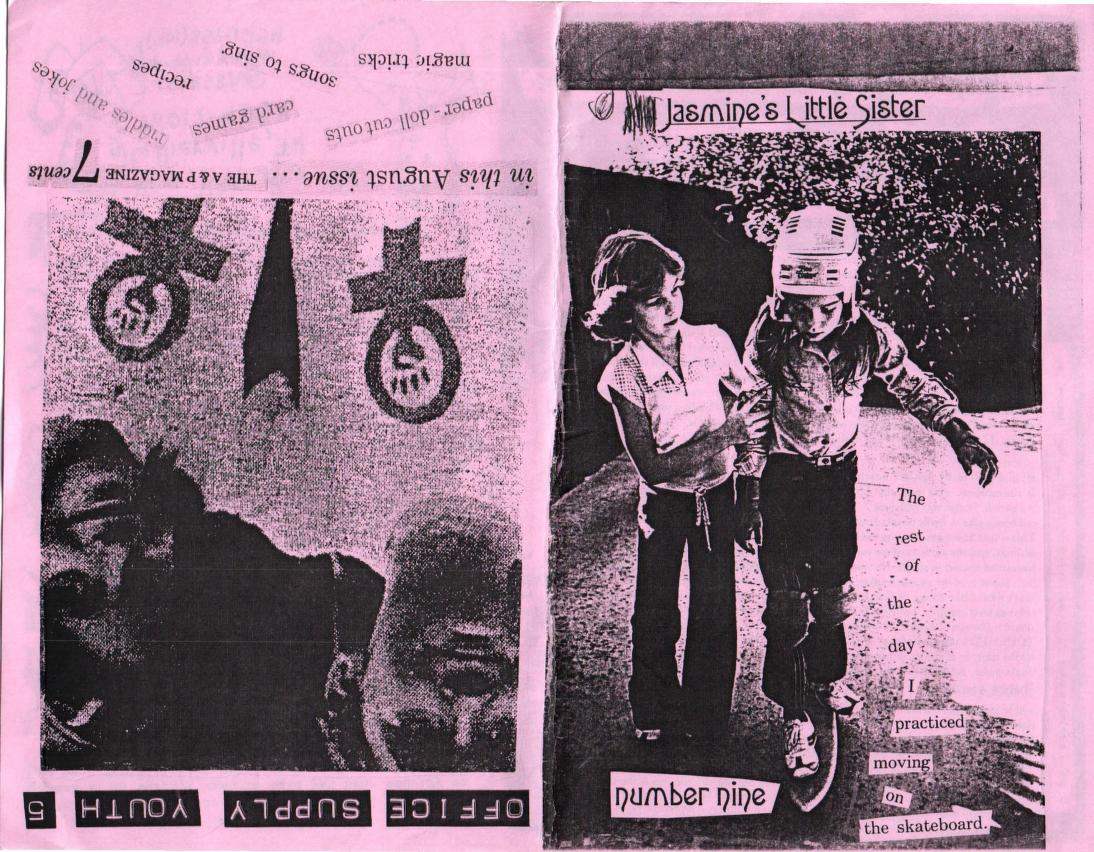
Zines have always been associated with political themes and continue to be published on the same. From feminism to Black activism, there are zines on every theme possible. However, limited distribution allows only some to become aware of such publications.
Zine culture has made its comeback in the recent years, due rise of individual expression in social media. Social movements like Black lives matter Portland launched a zine to express their work and beliefs. And what’s cool about creating your own zine in the modern era of the internet is that you’ll have no circulation restrictions. Everyone with an internet connection can easily read and share your ideas.